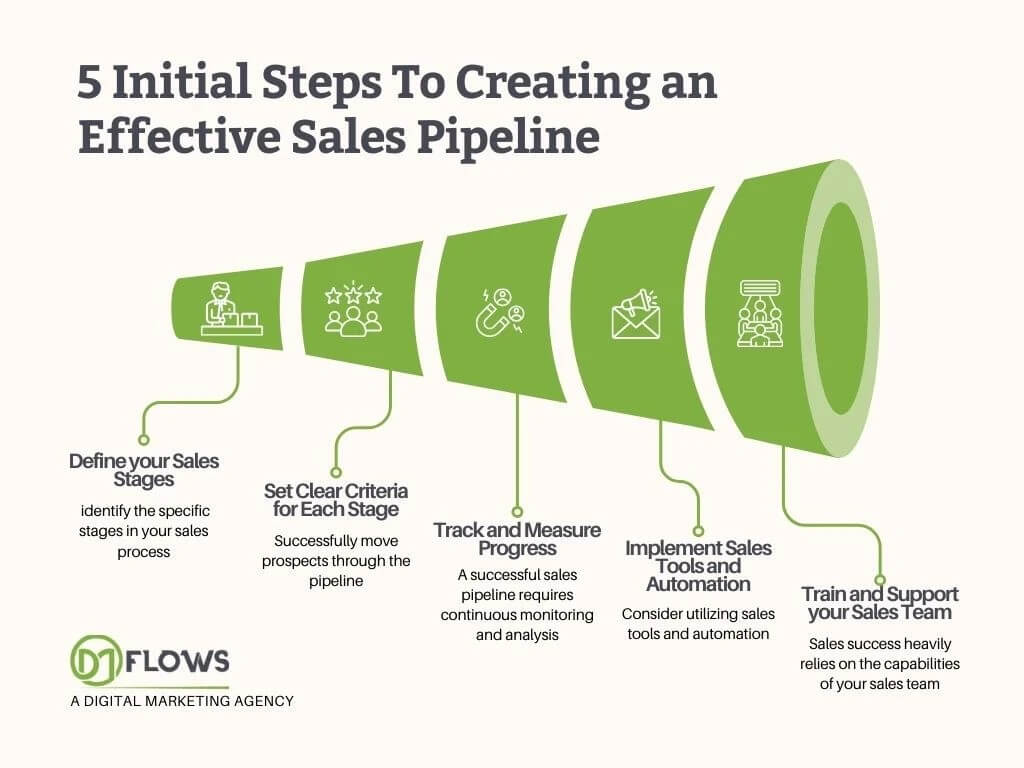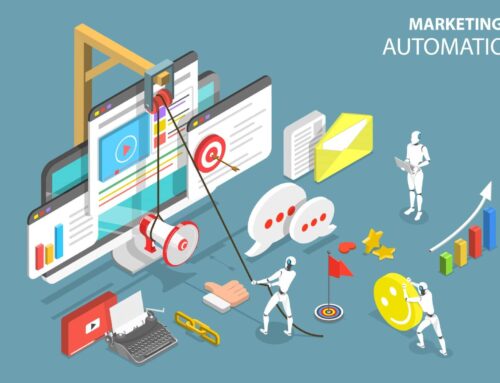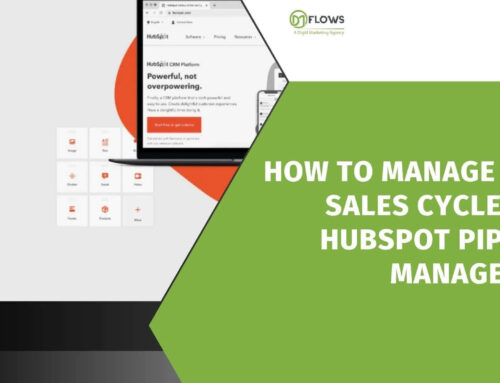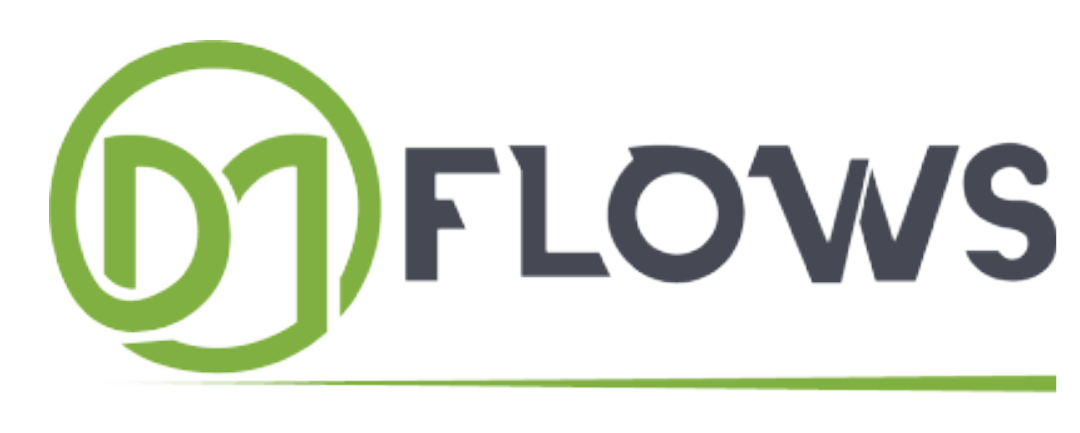What is a Sales Pipeline
A sales pipeline is a visual representation of the stages a potential customer goes through in the buying process. It is an essential tool for any business, as it allows sales teams to track and manage their interactions with leads, from initial contact to closing the deal.
By breaking down the sales process into distinct stages, such as prospecting, qualifying, presenting, and closing, businesses can easily identify where leads are getting stuck or dropping off.
Understanding the Sales Pipeline
In the world of business, a sales pipeline refers to the visual representation of the different stages a potential customer goes through before completing a purchase. It is a fundamental concept used by sales teams to track and manage their sales process.
The sales pipeline provides a clear framework that allows businesses to predict revenue, identify bottlenecks, and make informed decisions to optimize their sales efforts.
Every sales pipeline consists of a series of stages that correspond to the different steps in the buyer’s journey. These stages can vary depending on your business but typically include lead generation, qualification, discovery, proposal, negotiation, and closing.
The main goal of a sales pipeline is to guide potential customers smoothly through each stage, increasing the likelihood of conversion.
Sales Pipeline Stages
A sales pipeline is divided into different stages, which represent the steps a prospect goes through before making a purchase. These stages can vary depending on the company and the complexity of its sales process, but some common ones include:
- Prospecting: Identifying potential customers who might be interested in your product or service.
- Qualifying Leads: Assessing a prospect’s fit for your offering and their likelihood to buy.
- Engagement: Making contact with qualified leads and starting a conversation.
- Nurturing: Building relationships and trust with leads by providing valuable information.
- Proposal/Quote: Presenting a formal offer outlining your product or service and its price.
- Closing the Deal: Securing a commitment from the prospect to buy.
- (Optional) Implementation/Onboarding: Helping the new customer get started with your product or service.
How Sales Pipeline Works
Building a sales pipeline is crucial for any business looking to grow revenue and increase sales. > The first step in creating a successful sales pipeline is defining your target market and understanding their needs.
>> Next, you need to generate leads through various channels such as networking, cold calling, or social media marketing.
>> Once you have a list of potential prospects, you must qualify them by determining if they have the budget, authority, need, and timeframe (BANT) to purchase your product or service.
>> After qualifying leads, it’s essential to prioritize them based on their level of interest and engagement with your company. This will help you focus on high-value opportunities and improve your conversion rates.
>> Finally, regularly reviewing and analyzing your sales pipeline metrics will enable you to identify bottlenecks and areas for improvement in your sales process.
By following these steps diligently, you can build an effective and efficient sales pipeline that drives revenue growth for your organization.

5 Initial Steps To Creating an Effective Sales Pipeline
Developing an effective sales pipeline is crucial for maximizing sales efficiency and achieving consistent results.
Here are the key steps to create your own sales pipeline:
Step 1: Define your Sales Stages
The first step is to identify the specific stages in your sales process. Think about the typical journey that your customers go through, from initial contact to closing the sale. Map out each stage clearly and ensure they align with your business objectives and customer needs.
Step 2: Set Clear Criteria for Each Stage
To successfully move prospects through the pipeline, you need to establish clear criteria for advancing from one stage to the next. This includes defining what constitutes a qualified lead, the specific actions required to move to the next stage, and the expected outcomes at each step. This clarity will help your sales team prioritize their efforts and ensure they are focusing on the most promising opportunities.
Step 3: Track and Measure Progress
A successful sales pipeline requires continuous monitoring and analysis. Implement a system that allows you to track and measure progress at each stage of the pipeline. This could involve using a customer relationship management (CRM) system to store and manage data, as well as implementing key performance indicators (KPIs) to measure success.
By monitoring metrics such as conversion rates, average deal size, and sales cycle length, you can identify areas for improvement and take proactive measures to optimize your sales process.
Step 4: Implement Sales Tools and Automation
To streamline your sales pipeline, consider utilizing sales tools and automation. These can include customer outreach platforms, email marketing software, and analytics tools. By automating certain repetitive tasks, you can free up time for your sales team to focus on building relationships and closing deals.
Additionally, these tools provide valuable insights into customer behavior and help you tailor your approach for maximum impact.
Step 5: Train and Support your Sales Team
Sales success heavily relies on the capabilities of your sales team. Provide comprehensive training and ongoing support to ensure they are equipped with the necessary skills and knowledge to effectively navigate the sales pipeline.
Regularly review their performance, provide coaching, and empower them with the resources they need to excel.
10 Common Mistakes to Avoid When Setting Up Your Sales Pipeline
Setting up an effective sales pipeline is crucial for the success of any business. However, many companies make common mistakes that can hinder their efforts and lead to lost opportunities.
Here are 10 mistakes to avoid when setting up your sales pipeline:
1: failing to define your target audience clearly can result in unfocused and ineffective sales strategies.
2: not aligning your sales and marketing teams can lead to communication gaps and missed opportunities.
3: neglecting to establish clear sales goals and metrics can result in a lack of direction and accountability.
4: not properly segmenting and qualifying leads can waste valuable time and resources.
5: relying too heavily on automated systems without personalizing interactions can lead to a lack of rapport and trust.
6: ignoring the importance of ongoing training and development for your sales team can result in stagnant sales performance.
7: not utilizing technology and tools to track and analyze your sales pipeline can make it difficult to identify areas for improvement.
8: failing to regularly review and refine your sales processes can lead to outdated and ineffective strategies.
9: not having a consistent and streamlined lead nurturing and follow-up process can result in missed opportunities.
10: not adapting to market trends and changes in customer behaviors can make your sales pipeline less responsive and competitive.
By avoiding these common mistakes, you can optimize your sales pipeline and maximize your chances of success.
Top Tools and Software to Help You Manage Your Sales Pipeline
Managing a sales pipeline efficiently is crucial for any business looking to achieve success. Luckily, there are numerous tools and software available to help streamline this process and maximize sales productivity.
- One top tool is CRM (Customer Relationship Management) software, which allows you to track and manage leads throughout the sales process, ensuring no potential customer falls through the cracks. e.g. HubSpot
- Another valuable tool is a sales automation platform, which helps automate repetitive tasks, such as data entry and follow-up emails, freeing up time for sales representatives to focus on building relationships and closing deals.
- Additionally, analytics tools can provide valuable insights into your sales pipeline, allowing you to identify areas for improvement and optimize your sales strategies.
Overall, utilizing these top tools and software can significantly enhance your ability to manage your sales pipeline effectively and drive business growth.
Conclusion
In conclusion, a sales pipeline is a powerful tool that visualizes the customer journey, allowing you to track prospects, identify bottlenecks, and optimize your sales process for better conversions. By understanding the stages of a pipeline and following the steps to create one, you can transform your sales efforts from scattered outreach to a smooth, directed flow, ultimately leading to increased sales and a thriving business.





